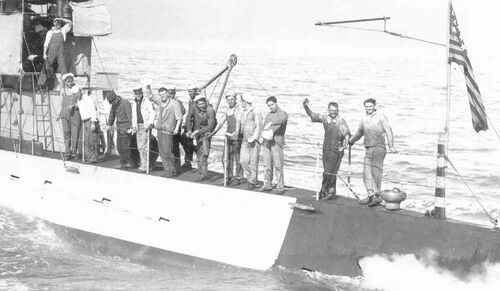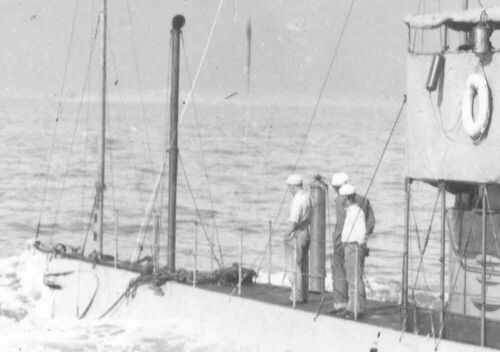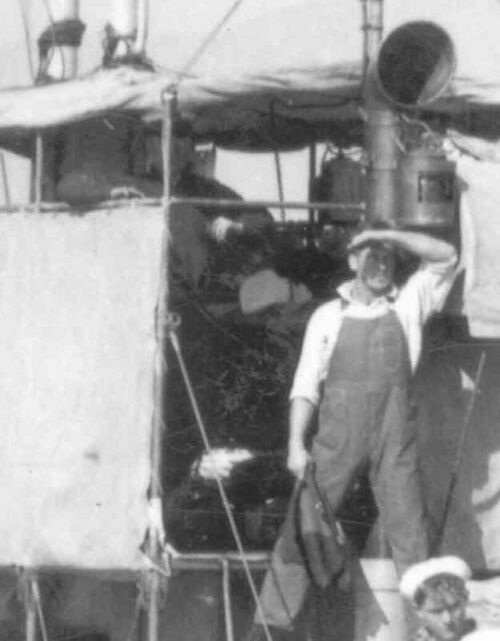K-3

Of note is the black cone dayshape hanging from the starboard yardarm on the radio mast. In today's International Regulations for Preventing Collisions at Sea (aka ColRegs) the cone dayshape signifies a ship underway and under power, although the point of the cone should be downwards. What this dayshape signified in 1915 is unknown.
Photo in the private collection of Ric Hedman

A closeup of the photo above showing the crew on the aft deck. Morale seems high. The men are waving and smiles abound.
Photo in the private collection of Ric Hedman

Another closeup shows three men on the forward deck. The purpose of the large cylinder between the men is unknown. The clutter of wires and stays is very evident in this photo.
Photo in the private collection of Ric Hedman

A closeup of the bridge shows what is likely the captain and possibly a Chief with their attention focused aft.
Photo in the private collection of Ric Hedman

K-3 and K-4 moored together in a nest at an east coast port, possibly Norfolk, Virginia circa 1915-1917. In the background the pier has a large crowd of naval personnel and civilians.
One thing is known for certain is the time of year the images was taken. That was between September 1 and May 31 when Blue Uniforms are directed worn by Navy Regulations. The man in the photo is also wearing a navy Peacoat which may imply a colder climate prompting a more northerly location. The man is probably the Topside Watch and probably armed with a .45 semi-automatic pistol. There is another man on the bridge of the USS K-4 just above the lamp.
A striking feature on both submarines is the tall ventilators use to take air into the submarines while traveling on the surface. On the photo of the K-3 there is a large portable lamp hung from the after side of the ventilator while the K-4 does not have this lamp. But, on the other side of the ventilator a vertical round plate can be seen. When the submarine is rigging for dive, the lamp and the ventilators are removed and the plate is lowered over the top of the tube shutting off the top so water will not flood the submarine. Water pressure will hold it in place. The tube is also closed from the bottom.
Photo in the private collection of Ric Hedman
Page created by:
Ric Hedman & David Johnston
1999 - 2023 - PigBoats.COM©
Mountlake Terrace, WA, Norfolk, VA
webmaster at pigboats dot com
